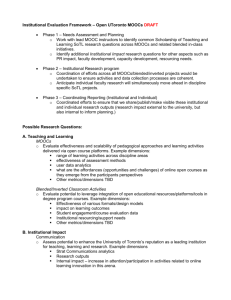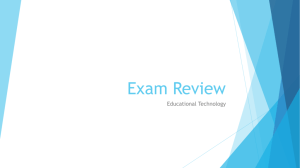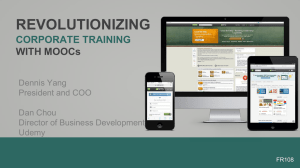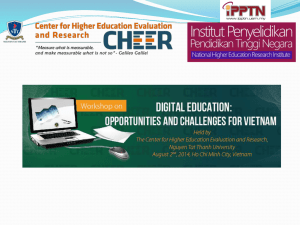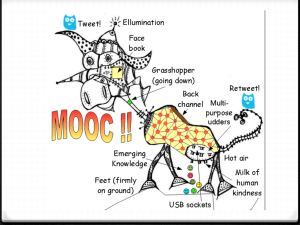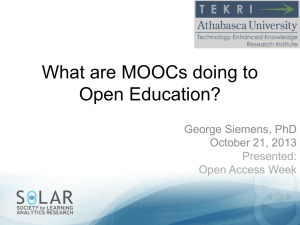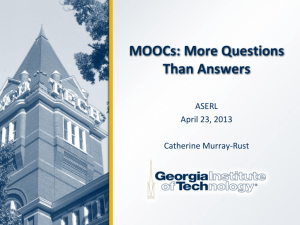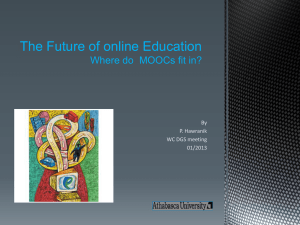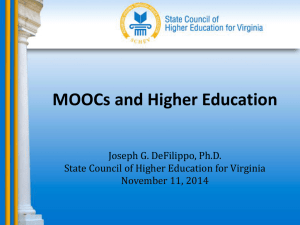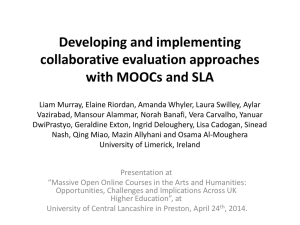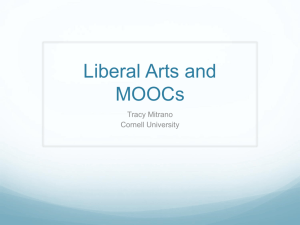Online Education in California Public Higher Education
advertisement
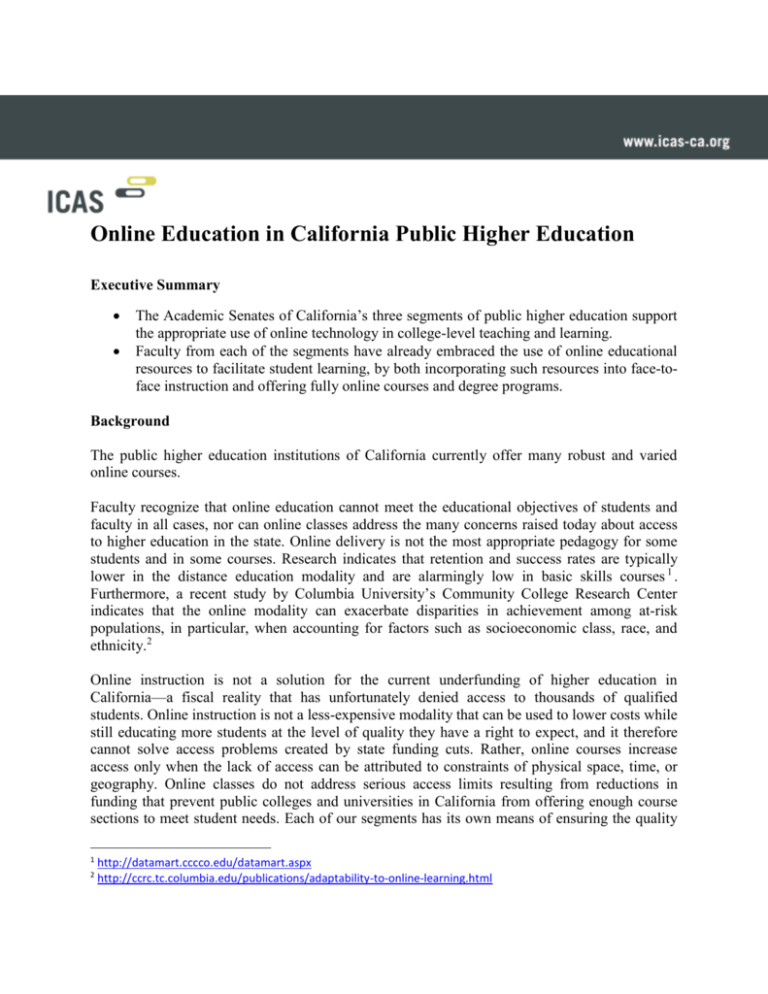
Online Education in California Public Higher Education Executive Summary The Academic Senates of California’s three segments of public higher education support the appropriate use of online technology in college-level teaching and learning. Faculty from each of the segments have already embraced the use of online educational resources to facilitate student learning, by both incorporating such resources into face-toface instruction and offering fully online courses and degree programs. Background The public higher education institutions of California currently offer many robust and varied online courses. Faculty recognize that online education cannot meet the educational objectives of students and faculty in all cases, nor can online classes address the many concerns raised today about access to higher education in the state. Online delivery is not the most appropriate pedagogy for some students and in some courses. Research indicates that retention and success rates are typically lower in the distance education modality and are alarmingly low in basic skills courses 1 . Furthermore, a recent study by Columbia University’s Community College Research Center indicates that the online modality can exacerbate disparities in achievement among at-risk populations, in particular, when accounting for factors such as socioeconomic class, race, and ethnicity.2 Online instruction is not a solution for the current underfunding of higher education in California—a fiscal reality that has unfortunately denied access to thousands of qualified students. Online instruction is not a less-expensive modality that can be used to lower costs while still educating more students at the level of quality they have a right to expect, and it therefore cannot solve access problems created by state funding cuts. Rather, online courses increase access only when the lack of access can be attributed to constraints of physical space, time, or geography. Online classes do not address serious access limits resulting from reductions in funding that prevent public colleges and universities in California from offering enough course sections to meet student needs. Each of our segments has its own means of ensuring the quality 1 2 http://datamart.cccco.edu/datamart.aspx http://ccrc.tc.columbia.edu/publications/adaptability-to-online-learning.html of its online offerings, and the long-standing relationships among and between the segments enable students to enroll in faculty-approved online courses from one segment and transfer those units to another. We recognize the critical instructor-student interaction that contributes to ensuring quality through student engagement and persistence, and the role that a qualified faculty member must play in any educational experience. This role is even more vital in the online realm, and only faculty can offer and guarantee that high-quality student experience. Access does not guarantee success. Merely providing additional enrollment slots by no means assures that students will succeed, and costs can be significant if resources are diverted from programs that provide targeted academic support to students in order to expand online offerings. Current Status One significant development in online education is the emergence of a new delivery platform— massive open online courses (MOOCs), a web-based system typified by enrollments of hundreds, even thousands, of students; a sequence of short instructional videos; automated grading tools; and reliance on student social networking tools rather than direct faculty-student interaction. While a MOOC may serve as a useful supplement to a college course, as preparation for taking a course, or as a review of information for a student who has previously completed a course, a MOOC cannot replace the direct instructor-student interaction that is essential to student success in college courses. While MOOCs may serve certain purposes, by their very nature they raise concerns about their place in higher education, particularly at so early a stage in their development. To encourage the use of MOOCs as a solution to access issues would be irresponsible, especially without a substantial body of supporting research attesting to their efficacy—and no such research currently exists. As with any professional endeavor, development of online education requires sustained investment in institutional infrastructure to ensure that we can continue to meet student needs, preserve student choice, improve the student experience, maintain quality and integrity, and identify new, unmet needs. We already know that, when it is done well, online education does not save money; online education cannot make up for the shortfall in resources we have experienced over the last six years. Goals and Recommendations We are convinced that, with the proper support, our faculties can continue to be leaders in the field of online education, and that innovations resulting from efforts led by our faculty and based on sound research will continue to provide California’s students with the quality educational experience they need and deserve. July 2013 The Intersegm ental Committee of the Academic Senate s (ICAS) was established by faculty in 1980 as a voluntary organization consisting of representatives of the Academ ic Senates of t he three segm ents of public higher educati on in California. For m ore inform ation, see: http://icas -ca.org/
